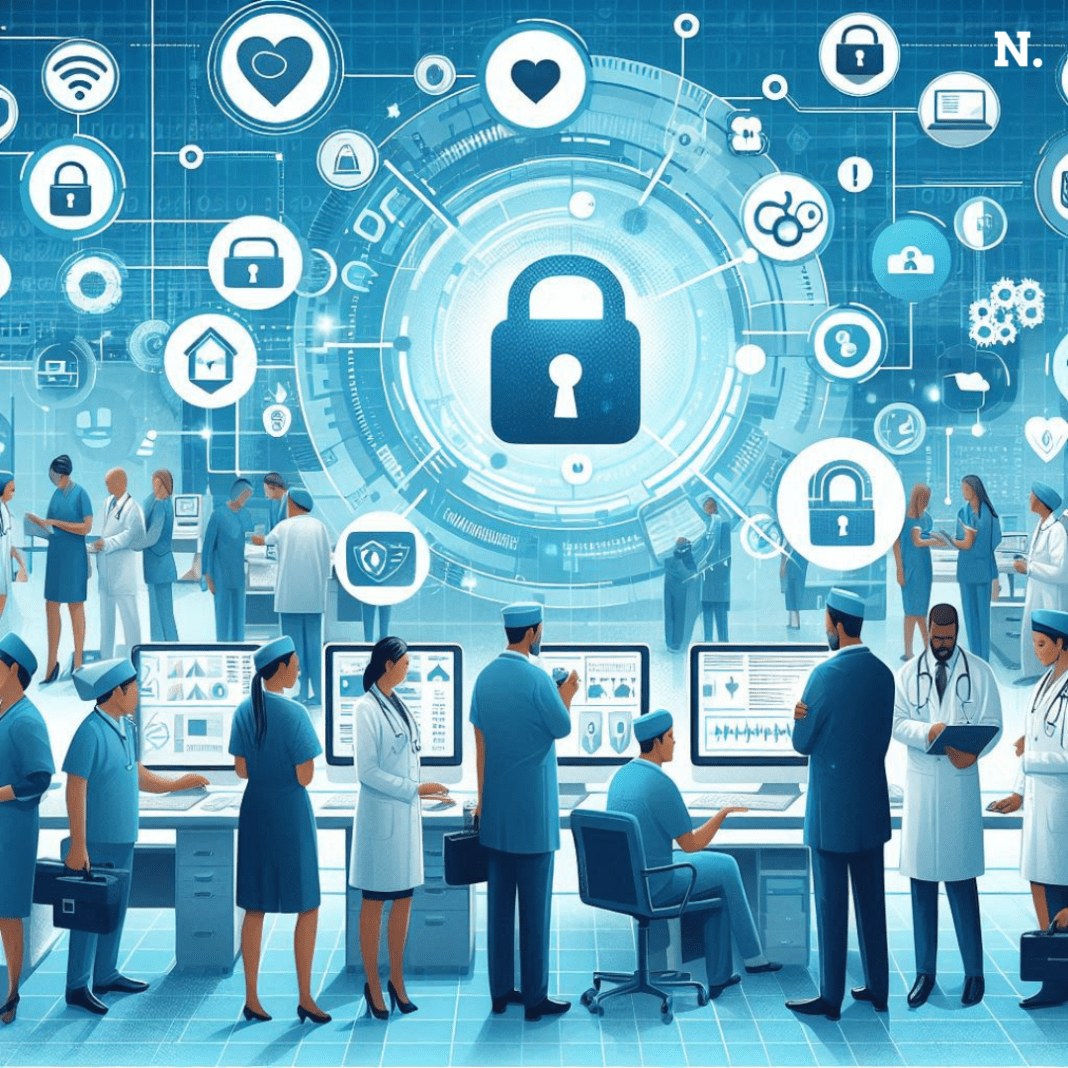Healthcare organizations are increasingly vulnerable to cyberattacks, which can lead to significant breaches of patient data and interruptions in business operations. The demanding nature of healthcare work often leaves staff with little time or inclination to stay informed about potential online threats. For many organizations, a comprehensive overhaul of their cybersecurity systems can seem daunting, making it difficult to prioritize necessary improvements.
Despite the rising threats, healthcare leaders recognize the importance of investing in cybersecurity measures. However, with new threats emerging daily, determining where to allocate limited budgets can be challenging. Among the primary reasons why the healthcare sector has become a major target for cyberattacks are the high demand for patient information, coupled with many organizations relying on outdated systems and technologies.
The Importance of Cybersecurity in Healthcare
Cybersecurity in healthcare is crucial for safeguarding various entities, including healthcare providers, insurers, and pharmaceutical companies. This involves implementing a range of strategies designed to protect against both internal and external cyber threats, ensuring the ongoing availability of medical services, the functionality of medical equipment, and the confidentiality and integrity of patient data. Additionally, robust cybersecurity measures help organizations comply with industry regulations, essential for maintaining trust and safety within the healthcare environment.
According to the U.S. Department of Health and Human Services, by January 7, 2022, there had been 860 data breaches exposing the protected health information (PHI) of over 500 individuals each. This vulnerability is exacerbated by the extensive use of connected medical devices and inadequately secured personal endpoints. As PHI can sell for hundreds of dollars on the black market, and with the average cost of a breach estimated at $9.23 million, organizations face considerable financial risks, operational disruptions, and hefty fines for violating privacy regulations like HIPAA.
Ransomware attacks have emerged as a significant threat, accounting for nearly 50% of all healthcare data breaches. In 2021, healthcare organizations faced extortion payments averaging $910,335, according to BakerHostetler’s 2021 Data Security Incident Response Report. The 2021 Verizon Data Breach Investigations Report highlighted that 86% of healthcare breaches stemmed from specific attack types, including errors (such as mis-delivery), web application attacks, and system intrusions often involving credential theft.
Why Healthcare is a Prime Target for Cybercriminals
The healthcare sector has become an attractive target for cybercriminals seeking access to sensitive patient information. With regulations such as GDPR on the horizon, hospitals must ensure robust protections for sensitive information, particularly for patients who frequently seek care. Medical devices, essential for patient care, often lack adequate security measures, creating vulnerabilities that cybercriminals can exploit. The rise of remote work further complicates security, as unsecured devices can compromise entire networks.
Kuwait Health Ministry Learns from Cyber Attack
Busy healthcare professionals often resist implementing new security measures, which can lead to increased vulnerabilities. Integration of solutions like Single Sign-On (SSO) and Multi-Factor Authentication (MFA) can enhance security without overwhelming users. However, training programs focused on cybersecurity are often limited, leaving staff ill-prepared to handle potential threats.
Management challenges also play a significant role, as billions of devices are interconnected in healthcare environments. Smaller organizations tend to be more susceptible due to limited budgets that restrict their ability to invest in cybersecurity solutions. Furthermore, reliance on obsolete technology heightens the risk of cyberattacks. For healthcare providers to safeguard patient data effectively, significant investments in modern cybersecurity solutions are imperative. By prioritizing security measures, organizations can better protect sensitive information from cyber threats.
Cybersecurity Risks in Healthcare
The high value of patient data makes healthcare organizations prime targets for cybercriminals. These organizations hold vast amounts of health records and personal information that are in high demand on the black market. A single successful attack can expose thousands of patients’ personal details, leading some cybercriminals to employ ransomware tactics, holding hospital data hostage until a ransom is paid. To mitigate these risks, healthcare organizations are legally obligated to secure patient data; failing to do so can incur costs far exceeding the expenses of implementing effective security measures like MFA, which strengthens security through multiple verification methods, complicating access for hackers.
Despite escalating threats, healthcare staff often remain unprepared to manage cyber risks. Medical professionals typically lack formal training in cybersecurity and struggle to prioritize education amidst their numerous responsibilities. It is essential to familiarize staff with basic online protection practices and train them to recognize common cybersecurity threats. Implementing user-friendly interfaces and secure networks can empower medical personnel, while additional security measures like SSO and MFA can provide an extra layer of protection without imposing overly complex protocols.
The Risks Posed by Medical Devices and Cyber Resilience
Medical devices present significant vulnerabilities, as they can act as easy entry points for cybercriminals. Many medical devices, such as drug dispensers and ECG monitors, lack the robust security measures found in standard computing devices, rendering them attractive targets. Moreover, the need for remote access for staff can expose organizations to further risks if devices are inadequately secured. Solutions like Risk-Based Authentication (RBA) can help mitigate these vulnerabilities by evaluating the risk level of devices based on various factors.
To effectively protect sensitive patient information, healthcare organizations must continuously adapt to evolving cybersecurity threats by updating their technologies and systems. A cyberattack can have dire consequences, including disruptions in patient care, delays in medical tests or treatments, and the potential for improper treatment resulting from manual record-keeping when electronic health records are compromised. For instance, a 2022 incident reported a “megadose” of an opioid pain medication administered to a 3-year-old patient due to the shutdown of the hospital’s computer systems.
Crimson Palace: The Alarming Chinese Cyber Espionage Threat Against Southeast Asia
Organizations affected by ransomware often experience increased delays in procedures and tests, leading to longer hospital stays, higher complication rates, and increased mortality risks. The financial burden of ransomware attacks can also be catastrophic for hospitals. In 2023, a study revealed that the average cost of a single healthcare data breach had risen to nearly $11 million, a 53% increase since 2020. Notably, in 2023, St. Margaret’s Health in Spring Valley, Illinois, became the first hospital to close, in part, due to the financial strain caused by a ransomware attack.
Developing Cyber Resilience in Healthcare
Federal regulators are urging the healthcare industry to enhance cybersecurity measures. Agencies like the Cybersecurity and Infrastructure Security Agency (CISA) have issued voluntary guidelines outlining basic hygiene practices and advanced encryption standards. The Department of Health and Human Services has proposed a cybersecurity strategy focused on developing voluntary guidelines and resources for the sector.
While many preventive controls are effective in thwarting attacks, hospitals must also establish comprehensive response plans for cyber disruptions. Most emergency operations plans inadequately address the unique challenges posed by cyber incidents. Information-sharing processes and the potential degradation of communication environments are often overlooked by planners. The cascading effects of cyberattacks are frequently not considered in continuity of operations plans.
To bolster their resilience, hospitals need to develop robust response strategies. This includes investigating potential cyber threats and assessing their levels of disruption. A thorough assessment of mission-critical functions and available resources is necessary to establish criteria for major decision-making processes, such as system shutdowns or patient diversions. Effective communication plans must include key contacts and responses in case of disruptions with partners. A well-rehearsed cyber incident response plan can significantly minimize the adverse effects of ransomware.
The Significance of Cyber Resilience in Healthcare
Cyber resilience has become increasingly vital for healthcare organizations due to several factors. Firstly, ensuring patient safety is paramount; these organizations hold extensive amounts of sensitive data, including medical records, personal information, financial data, and treatment histories. A cyberattack can compromise this information, posing significant risks to patient privacy and safety. For example, if medical records are altered or rendered inaccessible during an attack, the quality of patient care could be severely impacted, leading to potential harm.
Moreover, healthcare organizations must comply with stringent regulations like HIPAA, which mandate the protection and confidentiality of patient information. Non-compliance can result in significant penalties and legal repercussions. Operational continuity is another critical aspect, as healthcare services rely heavily on digital systems for various functions, including patient care, scheduling, billing, and communication. A cyberattack disrupting these systems can lead to treatment delays, appointment cancellations, and financial losses. Therefore, cyber resilience is essential for ensuring that organizations can maintain critical operations even during cyber incidents.
Additionally, protecting their reputation is vital for healthcare organizations, as successful cyberattacks can erode patient and public trust, prompting individuals to seek care elsewhere and ultimately impacting revenue. Lastly, the financial ramifications of a cyber-incident can be devastating; recovery processes can incur substantial costs, including remediation expenses, potential fines, and legal fees.
Achieving Cyber Resilience in Healthcare
The National Institute of Standards and Technology (NIST) Cybersecurity Framework 2.0 serves as a critical resource for healthcare organizations looking to develop comprehensive cybersecurity strategies. This framework emphasizes that cybersecurity is a collective responsibility, involving various stakeholders beyond the IT department. It comprises six core functions: governance, visibility, data protection technologies, anomaly detection, incident response capabilities, and operational recovery. These functions guide organizations in aligning their cybersecurity practices with regulatory requirements and organizational goals while fostering accountability and collaboration across all levels.
To enhance cyber resilience, healthcare organizations must implement robust strategies that prioritize real-time monitoring, advanced threat detection, and effective incident response. Utilizing comprehensive backup and recovery solutions ensures data integrity and availability, minimizing the impact of cyber incidents on patient care and organizational operations. By focusing on these key areas, healthcare providers can safeguard sensitive patient information, comply with regulations, and maintain critical service continuity in the face of evolving cyber threats.
The Advantages of Cloud Solutions for Cyber Resilience in Healthcare
Leveraging cloud technology offers numerous benefits for enhancing cyber resilience in healthcare organizations. Cloud platforms offer scalable resources to accommodate fluctuating workloads and data processing needs. This ensures consistent performance and availability, especially during peak times or cyberattacks. Additionally, cloud providers maintain redundant infrastructures. They also operate geographically distributed data centers. These measures help mitigate the risks of data loss or downtime caused by hardware failures, natural disasters, or cyber incidents.
Cloud providers invest significantly in security technologies and compliance measures, including encryption, access controls, and regular audits. These investments can help organizations adhere to regulatory requirements and industry standards. By utilizing cloud solutions, healthcare organizations can access advanced cybersecurity tools, such as intrusion detection systems, threat intelligence, and security analytics. Implementing these solutions independently may be financially prohibitive for many organizations. These features enable proactive threat detection and response capabilities, further enhancing an organization’s overall cyber resilience.
Lastly, cloud solutions can support collaboration and information sharing among healthcare organizations, enabling them to share threat intelligence and best practices to enhance their collective security posture. This collaborative approach helps build a stronger defense against cyber threats, ultimately benefiting the entire healthcare ecosystem.




